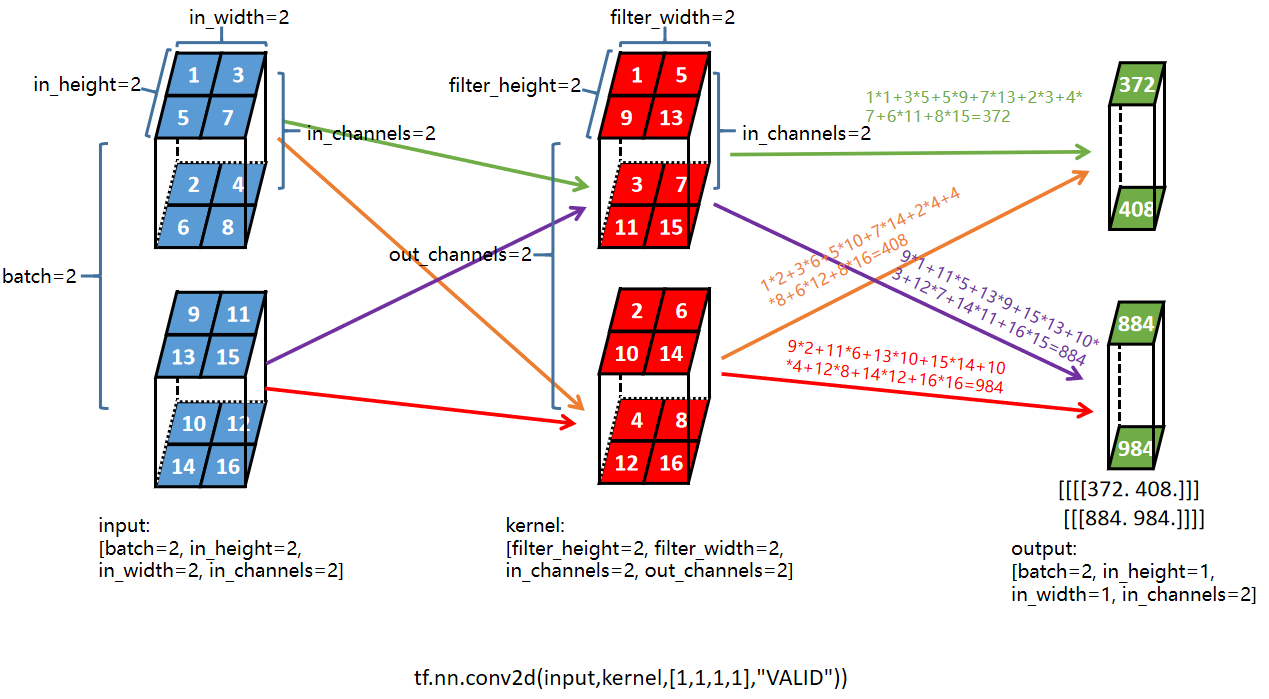目录
| 直接定义的缺点 |
在tensorflow中假设有一批输入为:

其定义如下:


tf.constant([ [ [ [3, 1, -3], [1, -1, 7] ], [ [-2, 2, -5], [2, 7, 3] ] ], [ [ [-1, 3, 1], [-3, -8, 6] ], [ [4, 6, 8], [5, 9, -5] ] ]], tf.float32)
这是一个4维张量,中括号的层次比较多,因此定义起来很容易写错;另外一批卷积核的定义方式和他不同,这也增加了定义的难度。
批次输入的张量的定义方式为:[batch, in_height, in_width, in_channels]
多个卷积核的定义方式为:[filter_height, filter_width, in_channels, out_channels]
| 简易定义的方式 |

对一批输入:
按照图中蓝色的顺序声明一个一维张量,然后按照[batch, in_height, in_width, in_channels],对一维张量reshape。
对一批卷积核:
按照图中红色的顺序声明一个一维张量,然后按照[filter_height, filter_width, in_channels, out_channels],对一维张量reshape。
这样的话不需要写很多行并且包含复杂中括号关系的代码,看着张量能快速写出对应声明,提高写代码的效率,另外出错的概率会降低


import tensorflow as tf# [batch, in_height, in_width, in_channels]input = tf.constant([1,2,3,4,5,6,7,8,9,10,11,12,13,14,15,16], tf.float32)input = tf.reshape(input,[2,2,2,2])print(input.shape)# [filter_height, filter_width, in_channels, out_channels]kernel = tf.constant([1,2,3,4,5,6,7,8,9,10,11,12,13,14,15,16], tf.float32)kernel = tf.reshape(kernel,[2,2,2,2])print(kernel.shape)print(tf.Session().run(tf.nn.conv2d(input,kernel,[1,1,1,1],"VALID")))
| 参考资料 |
《图解深度学习与神经网络:从张量到TensorFlow实现》_张平